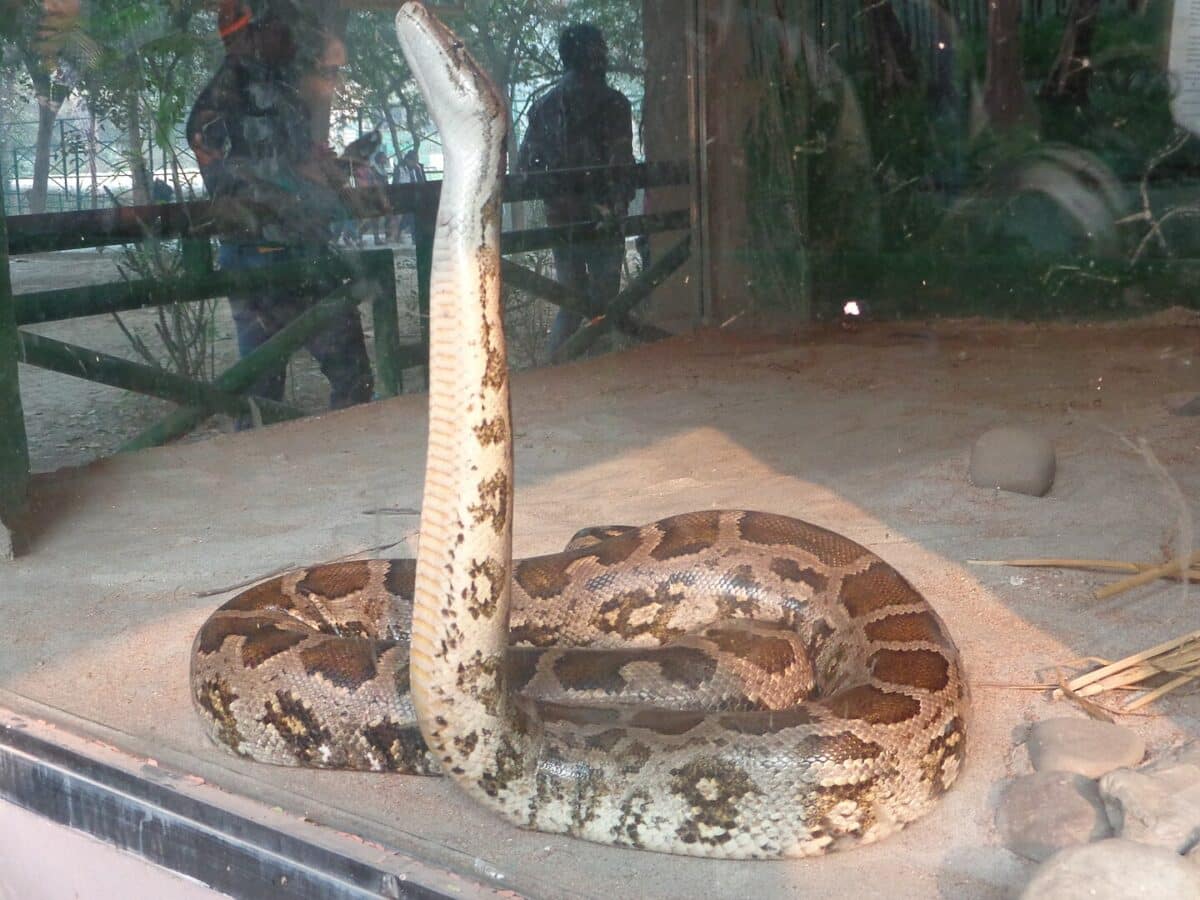It’s feeding time, and this hungry snake thinks its owner looks like a nice snack. The snake attacks her and begins to constrict her whole arm – reminding all snake owners how important it is to have safety protocols when it comes to their slithery and unpredictable pets.
The Footage: Snake Attacks and Constricts Owner
A woman is preparing to feed her pet snake, and as she opens the cage, the snake sticks its head out – seemingly friendly and curious.
Suddenly, the situation escalates, and the snake lunges and bites her hand. Then, it swiftly begins to coil around her entire arm, constricting it tighter and tighter. With help from her husband, the snake finally releases its bite after a few minutes of struggle, and blood begins to drip on the floor.
Pet snake or not, snakes can be unpredictable and dangerous creatures.
How to Make a Snake Relax Its Bite
- Stay Calm: Panicking can further agitate the snake.
- Do Not Pull Away: This can cause more injury and strengthen the snake’s grip.
- Use Water: Gently pouring water over the snake’s head can encourage it to release its bite.
- Alcohol Swab: Applying this near the snake’s mouth can be effective, as they dislike the smell.
- Unwind Gently: If the snake is coiling, carefully unwind it in the direction of the coiling.
What to Do If Your Pet Snake Bites You
When bitten by a pet snake, immediate action is crucial. Firstly, remain calm to avoid escalating the situation. Once free, clean the wound thoroughly with soap and water to prevent infection. Seek medical attention, especially if the bite is deep or if you feel unwell.
It’s also important to understand why the snake bit you to prevent future incidents.
Necessary Safety Protocols If You Keep a Pet Snake
Owning a pet snake requires adherence to safety protocols to ensure both the owner’s and the animal’s well-being. Always handle your snake with care and respect, understanding its needs and behavior. Use proper tools like snake hooks for handling larger snakes.
Never handle your snake when it’s shedding, after feeding, or if it’s showing signs of stress. You should also ensure that the snake’s habitat is secure to prevent escapes.
Small Cages Lead to Aggression

The size of the cage plays a significant role in a snake’s behavior. Small, cramped cages can lead to stress and aggression in snakes. They require enough space to move freely and exhibit natural behaviors.
A lack of space can lead to health issues and increased aggression, as seen in the video. It’s crucial to provide an appropriately sized habitat for your pet snake, considering its species and size.
Reading Their Body Language: How to Tell a Snake Is About to Attack
Understanding a snake’s body language is key to preventing attacks.
Signs of an impending strike include hissing, a flattened neck (in cobras), coiling tightly, and a focused, unblinking stare. If a snake is hiding or retreating, it may feel threatened and could attack if provoked. Recognizing these signs can help in taking timely action to avoid an attack.
Snake Attacks and Constricts Owner: Conclusion

While snakes can be fascinating pets, they require knowledgeable and careful handling to ensure the safety of both the animal and the owner. Attacks like this one are not that uncommon and could’ve ended really badly if she was alone with the attacking snake.
Thank you for reading this story about the snake that attacks and constricts its owner! You’ll find even more slithery snakes below:
- Watch: Oblivious Sloth Crawls Across Anaconda
- Watch How Massive Ananconda Stops Traffic When It Crosses Highway
- Highly Poisonous Green Mamba Snake on the Loose in Netherlands
Join our Forum for free today!


